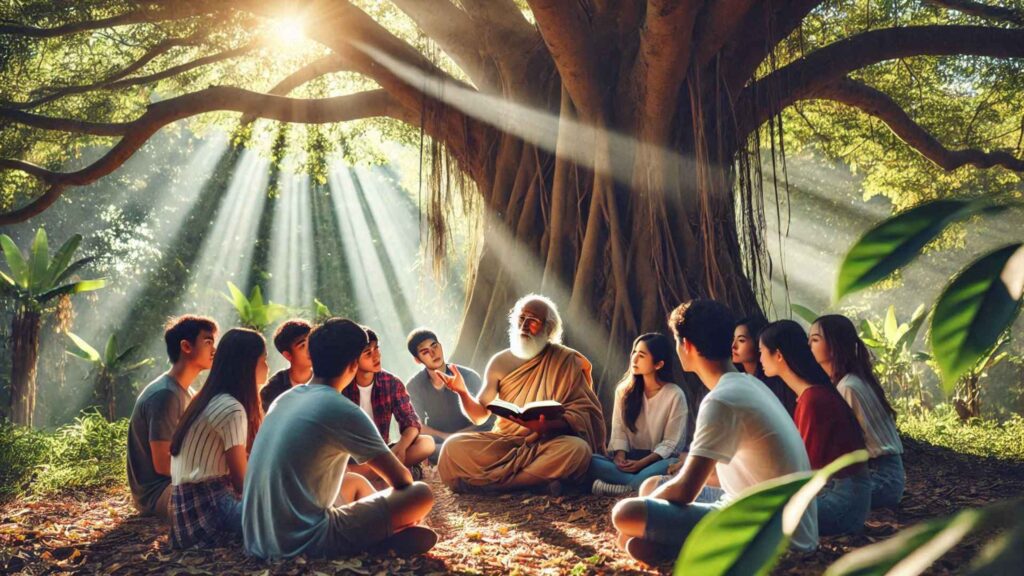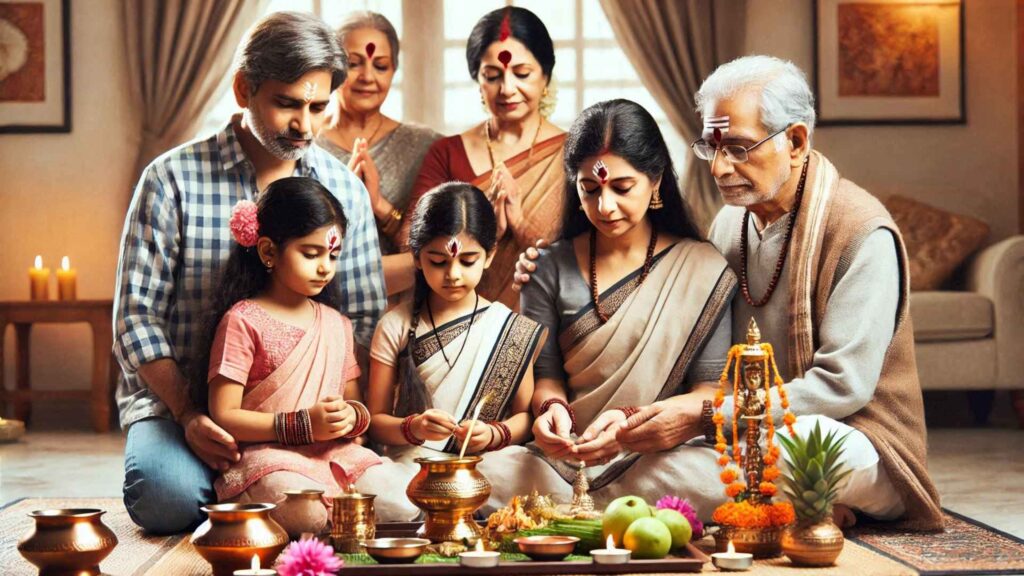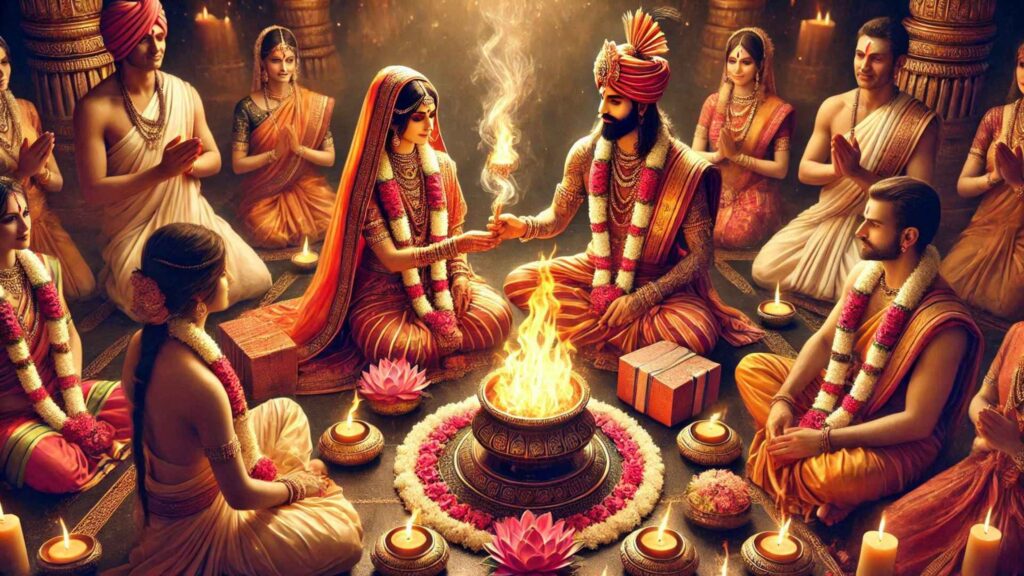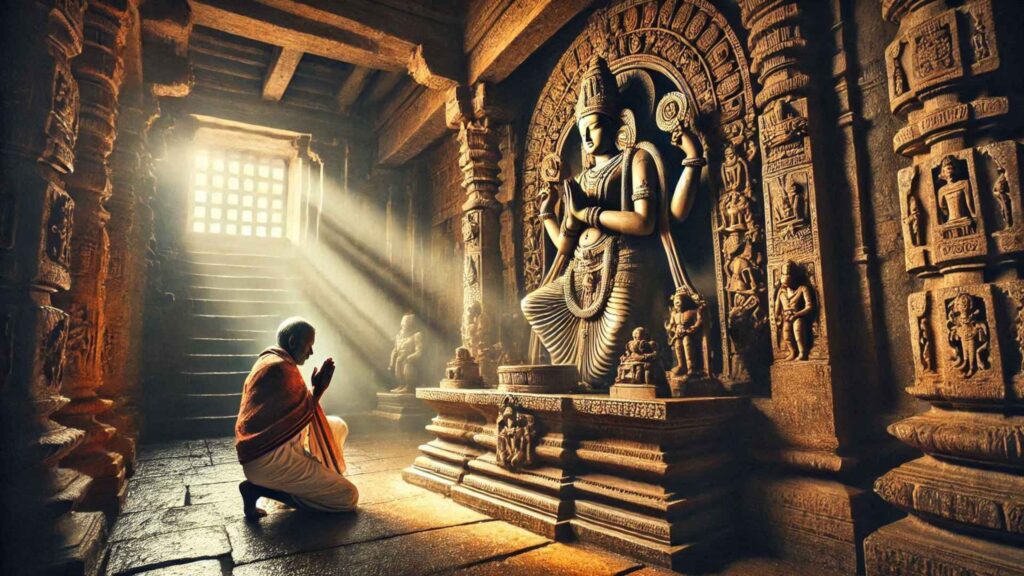Sacred Elements in Hinduism: The Heart of Timeless Spirituality
Hook Statement: In a world where traditions ebb and flow, what truly anchors us to our spiritual essence? For over millennia, Hinduism has celebrated the sacred in the everyday, intertwining the divine with human relationships.
Overview of Sacred Elements: Hinduism, one of the oldest religions, offers a profound understanding of life’s sacredness. The Guru-Shishya bond, family ties, marriage, and devotee-deity relationships embody this principle. These sacred elements transcend rituals, anchoring individuals in their quest for moksha (liberation).
Read More About sacred texts
Historical Significance: These relationships aren’t just societal constructs; they are steeped in history, myths, and scriptures. They serve as a medium for moral guidance, spiritual growth, and social cohesion, evolving alongside humanity.
Relevance Today: In an era of technological advancement, these timeless bonds remain vital for nurturing inner peace, ethical living, and spiritual connection. They serve as a reminder of humanity’s collective responsibility to uphold dharma (righteousness).
1. Historical Background
Guru-Shishya Tradition:

- Origin Mythology: Traced back to the Upanishads and Vedas, this bond was vital for transferring spiritual knowledge orally.
- Evolution: From Vedic sages like Vyasa to modern gurus like Vivekananda, the tradition has evolved to address contemporary challenges.
- Documentation: Texts like the Bhagavad Gita emphasize this dynamic, with Lord Krishna guiding Arjuna as the ideal guru.
- Regional Variations: Gurukul systems were prevalent in different forms across India, from Kanchipuram to Varanasi.
Family Bonds:

- Scriptural Roots: Families in Hinduism are likened to a sacred yajna (sacrifice), with roles defined by scriptures like the Manusmriti.
- Evolution: Joint families once dominated, but nuclear setups have emerged in modern times.
- Cultural Depictions: Epics like the Ramayana and Mahabharata spotlight family conflicts, reconciliation, and duty.
- Regional Nuances: Family roles and dynamics differ across Indian states, reflecting diverse customs.
Marriage:

- Mythology: The divine unions of Shiva-Parvati and Rama-Sita symbolize cosmic harmony.
- Vedic Rituals: Ancient texts like the Rigveda outline marriage as a sacred samskara (life stage).
- Historical Shifts: Over time, arranged marriages became common, often adhering to caste and community norms.
- Regional Diversity: Customs like the Bengali sindoor ritual or South Indian kanya-daan showcase varied practices.
Devotee-Deity Relationship:

- Scriptural Emphasis: Bhakti Yoga, as described in the Bhagavad Gita, underscores devotion.
- Historical Movements: Saints like Meera Bai and Ramanuja championed this connection, popularizing devotion over ritualism.
- Artistic Depictions: Temples, sculptures, and hymns immortalize this bond.
- Regional Influence: Devotional forms like Tamil Nadu’s Alvars and Maharashtra’s Varkari movement highlight regional diversity.
2. Spiritual Significance
Guru-Shishya:
- Religious Importance: Facilitates the transmission of spiritual wisdom and self-realization.
- Symbolic Meaning: Represents the eternal flame of knowledge passed from one generation to another.
- Connection to Deities: Often equated to divine bonds, e.g., Dronacharya teaching Arjuna.
- Philosophical Role: Highlights surrender, discipline, and mutual respect.
Family Bonds:
- Spiritual Energy: Families are seen as microcosms of the cosmic family.
- Role in Dharma: Each member fulfills specific duties, promoting societal order.
- Deity Connection: Worship often involves family participation, like Diwali pujas.
- Symbolic Unity: Represents the harmonious interplay of individual roles.
Marriage:
- Sacred Union: Viewed as a merging of two souls for a shared dharma.
- Cosmic Symbolism: Reflects Shiva-Shakti, yin-yang energies in balance.
- Role in Rituals: Marriage strengthens community bonds through rituals.
- Energy Properties: Sacred fires and mantras imbue spiritual energy into the union.
Devotee-Deity:
- Bhakti Yoga: Emphasizes surrender, trust, and love for the divine.
- Personal God Concept: Offers individuals direct, intimate relationships with God.
- Symbolism: Temples, idols, and offerings act as conduits for divine connection.
- Philosophical Impact: Aligns individual desires with higher truths.
3. Practical Application
Guru-Shishya:
- Daily Practices: Study of scriptures, meditation, and satsang (spiritual discourse).
- Modern Adaptations: Online spiritual courses and global yoga retreats.
Family Bonds:
- Daily Rituals: Morning prayers, sharing meals, and festivals like Navaratri.
- Home Worship: Family altars and joint participation in pujas.
Marriage:
- Ceremonial Practices: Vows around the sacred fire, exchanging garlands.
- Modern Adaptations: Fusion weddings that blend traditions with contemporary elements.
Devotee-Deity:
- Daily Worship: Arti (lamp offerings), chanting, and meditation.
- Festivals: Devotees celebrate festivals like Janmashtami with grandeur.
- Temple Visits: Weekly visits maintain a community connection.
- Home Altars: Personalize devotion spaces with icons and sacred symbols.
4. Cultural Impact
Guru-Shishya:
- Art: Classical dance forms like Bharatanatyam celebrate this tradition.
- Literature: Poetic works such as the Bhakti poetry echo guru devotion.
Family Bonds:
- Societal Influence: Inspires values like compassion, respect, and cooperation.
- Regional Customs: Celebrations like Raksha Bandhan honor sibling bonds.
Marriage:
- Artistic Expression: Wedding murals, songs, and dances highlight cultural beauty.
- Literary Depictions: Classic epics often revolve around marital themes.
Devotee-Deity:
- Festivals: Events like Durga Puja and Ratha Yatra attract global attention.
- Regional Variations: Kerala’s temple festivals differ from Gujarat’s Navratri dances.
5. Conservation/Preservation
Guru-Shishya:
- Challenges: Decline in traditional gurukuls.
- Efforts: Revival through organizations like Chinmaya Mission.
Family Bonds:
- Challenges: Erosion due to urbanization.
- Initiatives: Joint family campaigns and awareness programs.
Marriage:
- Challenges: Commercialization of weddings.
- Efforts: Promoting simple, eco-friendly ceremonies.
Devotee-Deity:
- Environmental Aspects: Eco-friendly idols and sustainable temple practices.
- Preservation Efforts: Protecting ancient temples and sacred sites.
6. Expert Insights
- Quotes: Swami Vivekananda emphasized, “Education is the manifestation of the perfection already in man.”
- Scientific Research: Studies on family structures show higher emotional resilience in joint families.
- Modern Interpretations: Psychologists stress the importance of traditional practices for mental well-being.
- Opinions: Sociologists advocate for balancing tradition with modernity to preserve sacred bonds.
7. Conclusion
The sacred elements of Hinduism—Guru-Shishya, family bonds, marriage, and devotee-deity relationships—aren’t relics of the past. They are living, breathing aspects of a timeless tradition, deeply relevant in today’s fast-paced world. By embracing these connections, we align ourselves with the divine and nurture a harmonious existence.


